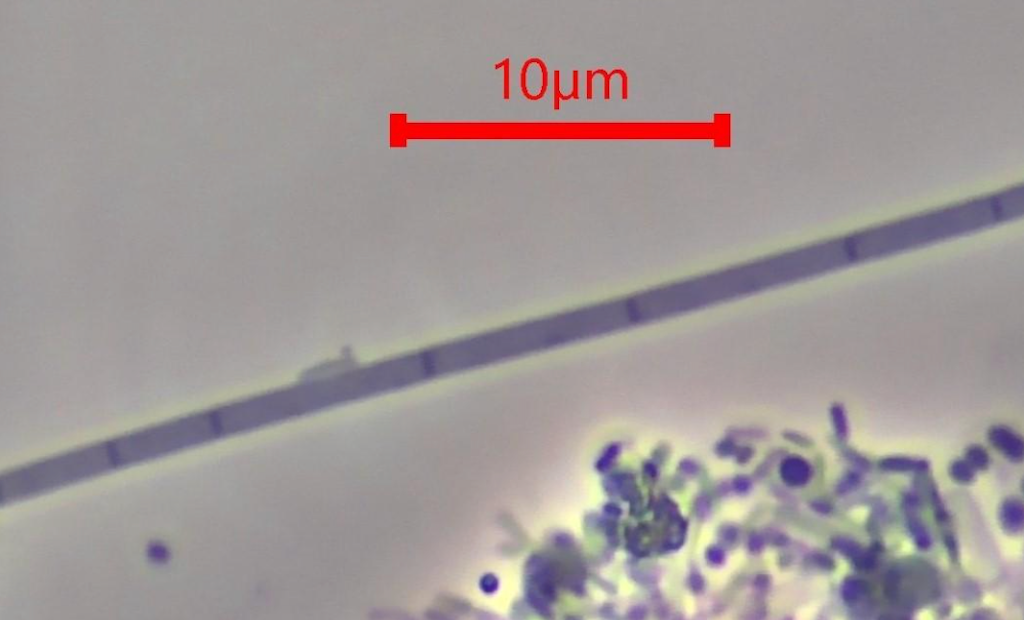Interested in Laboratory?
Get Laboratory articles, news and videos right in your inbox! Sign up now.
Laboratory + Get AlertsType 0961 filaments are readily distinguishable at 1,000x oil immersion phase contrast as a light or transparent filament with rectangular cell shape, visible septa (cross-walls) and diameter range between 1.0-1.4 µm.
The recognized growth cause for type 0961 filament types is elevated concentrations of low molecular weight organic acids. While Type 0961 are classified as organic acid filament types, they also generally favor higher SRT values. Type 0961 filament types by classification do not have a true sheath, although Dr. Michael Richard recognized a “slime sheath”, which is occasionally viewed on the filament tip, resembling an empty cuff. With recent DNA findings, it appears likely that there is high potential genetic diversity that may display type 0961 characteristics (sheaths may potentially be variable).
Based on early correlations of DNA/microscopy comparisons (my limited and informal research), Reyanella is a potential candidate for Type 0961 morphology. However, this statement requires additional testing and research. It is suspected that Type 0961 may correlate with other Proteobacteria phylum, but at higher taxonomic levels than genus or species. Regardless of the genetic properties of the actual filament, the correlation between type 0961 morphology and organic acids and generally higher SRT values have held up over several decades.
Type 0961 is not a highly frequent cause of bulking in most systems, however, when it is the predominant cause of bulking, it extends from the flocs, slowing down the compaction rates of the flocs. Control methodology varies for Type 0961 depending upon individual circumstances. Selective RAS chlorination and/or coagulants/settling aids are commonly applied at higher urgency situations.
From a practical standpoint, recognizing type 0961 filament types at lower abundance may help distinguish between other filament types that may be difficult to diagnose under the microscope (i.e., type 0041/0675 versus Thiothrix) based on the general SRT correlation. Note that while type 0961 generally favors higher SRT values, it commonly proliferates when concentrations of low molecular weight organic acids increase. Type 0961 bulking events may be quite sudden due to the general high kinetic growth rates this filament is likely capable of. Fast growing Type 0961 has been recognized to be capable of increasing SVI values two to three times within a day or two.
About the author: Ryan Hennessy is the principal scientist at Ryan Hennessy Wastewater Microbiology. He was trained and mentored by Dr. Michael Richard for over 10 years in wastewater microbiology, and serves as a microbiology services consultant. Hennessy is a licensed wastewater treatment and municipal waterworks operator in the state of Wisconsin and fills in as needed for operations at several facilities. He can be reached at ryan@rhwastewatermicrobiology.com. Hennessy's new book Wastewater Microbiology: Filamentous Bacteria Morphotype Identification Techniques, and Process Control Troubleshooting Strategies is now available on Amazon.






